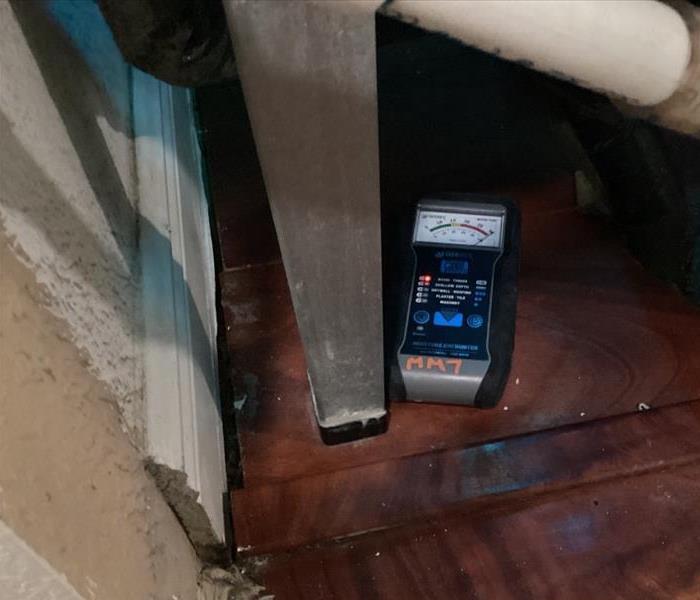Mold in Your Basement: Causes and Remediation Strategies
9/16/2024 (Permalink)
 Mold growth is a common issue in basements in the United States, and it’s one that can lead to costly repairs if not properly addressed.
Mold growth is a common issue in basements in the United States, and it’s one that can lead to costly repairs if not properly addressed.
Mold growth is a common issue in basements in the United States, and it’s one that can lead to costly repairs if not properly addressed. While basements are naturally more prone to dampness due to their below-ground structure, understanding the causes of mold growth and how to prevent it is key to maintaining a mold-free home. This article will explore the main causes of basement mold and provide expert insights into remediation strategies that can help you protect your property.
Why Is Mold So Common in Basements?
Basements are particularly vulnerable to mold for several reasons. Being below ground level, basements are more likely to experience higher humidity levels and water intrusion, creating the perfect environment for mold to thrive. Mold is a type of fungus that grows in areas with moisture, warmth, and a food source (like wood, paper, or insulation). According to the Environmental Protection Agency (EPA), nearly 50% of homes in the United States have damp basements, making them ideal environments for mold growth.
Common Causes of Mold in the Basement
Understanding the causes of mold in basements can help you prevent future outbreaks. Here are some of the most common reasons mold takes hold in basements:
- Water Intrusion: Leaks from foundation cracks, poor drainage systems, or faulty plumbing can introduce water into your basement. Even minor leaks can lead to moisture buildup over time, encouraging mold growth.
- High Humidity Levels: Basements often have higher humidity levels compared to other parts of the house. This is due to poor ventilation and the natural coolness of basement walls, which can cause condensation to form. Mold thrives in humid environments with humidity levels over 60%.
- Poor Ventilation: Many basements lack proper airflow, allowing damp, stagnant air to linger. Without proper ventilation, moisture has no way to escape, creating ideal conditions for mold.
- Flooding: Floods, whether caused by natural disasters or plumbing issues, can introduce large amounts of water into a basement. Even after the water is pumped out, the residual moisture can lead to mold growth if the area isn’t dried thoroughly.
- Organic Materials: Mold requires organic materials to grow. Many basements contain wood framing, drywall, paper products, and other materials that provide a food source for mold.
Expert Remediation Strategies for Basement Mold
If mold has already begun to grow in your basement, it’s crucial to address it quickly to prevent further damage. Here are some proven mold remediation strategies:
- Identify and Fix the Source of Moisture: The first step in remediation is to identify and eliminate the source of moisture. Whether it's a leaking pipe, a crack in the foundation, or improper drainage, fixing the root cause is essential. Without addressing the moisture source, mold will continue to return even after cleanup.
- Dry the Affected Area: Once the source of moisture is fixed, the next step is to thoroughly dry the affected area. Use dehumidifiers and fans to reduce moisture in the air, and make sure all surfaces are completely dry before attempting mold removal.
- Remove Moldy Materials: If mold has affected porous materials such as carpeting, drywall, or insulation, these materials may need to be removed and replaced. Non-porous surfaces like concrete can often be cleaned with specialized mold removal products.
- Clean and Disinfect Surfaces: After removing moldy materials, all remaining surfaces should be cleaned and disinfected using a professional-grade mold cleaner. SERVPRO® technicians are equipped with specialized cleaning agents that can effectively remove mold from surfaces and prevent future growth.
- Improve Ventilation and Reduce Humidity: Once remediation is complete, improving ventilation in the basement is key to preventing future mold outbreaks. Installing a dehumidifier and ensuring proper airflow can help keep humidity levels low and prevent the conditions that lead to mold growth.
How to Prevent Mold Growth in the Basement
Prevention is the best way to avoid costly mold remediation in the future. Here are some expert tips for keeping mold out of your basement:
- Ensure Proper Drainage: Make sure your home’s gutters and downspouts direct water away from the foundation. Water pooling near the foundation can seep into your basement, leading to moisture issues.
- Install a Sump Pump: If your basement is prone to flooding, installing a sump pump can help remove water quickly and prevent it from causing mold-inducing dampness.
- Use a Dehumidifier: Basements tend to have higher humidity levels. Using a dehumidifier can help keep the moisture in check, reducing the risk of mold growth.
- Seal Foundation Cracks: Inspect your foundation regularly for cracks and have them professionally sealed to prevent water from seeping into your basement.
- Maintain HVAC Systems: Regular maintenance of HVAC systems and ductwork can help prevent moisture buildup and ensure that your basement is properly ventilated.
Trust SERVPRO for Expert Mold Remediation
Mold in your basement can be a serious issue, but with the right strategies and professional help, it can be effectively addressed. SERVPRO is equipped with the expertise, tools, and techniques needed to handle basement mold remediation quickly and efficiently. From identifying moisture sources to removing moldy materials and preventing future outbreaks, our team is ready to restore your basement to a safe and clean condition.
With regular maintenance and attention to moisture control, you can keep your basement free from mold and enjoy peace of mind knowing that your home is protected from this common issue.
For professional mold remediation services, contact SERVPRO today and let us help you safeguard your home from mold damage.



 24/7 Emergency Service
24/7 Emergency Service